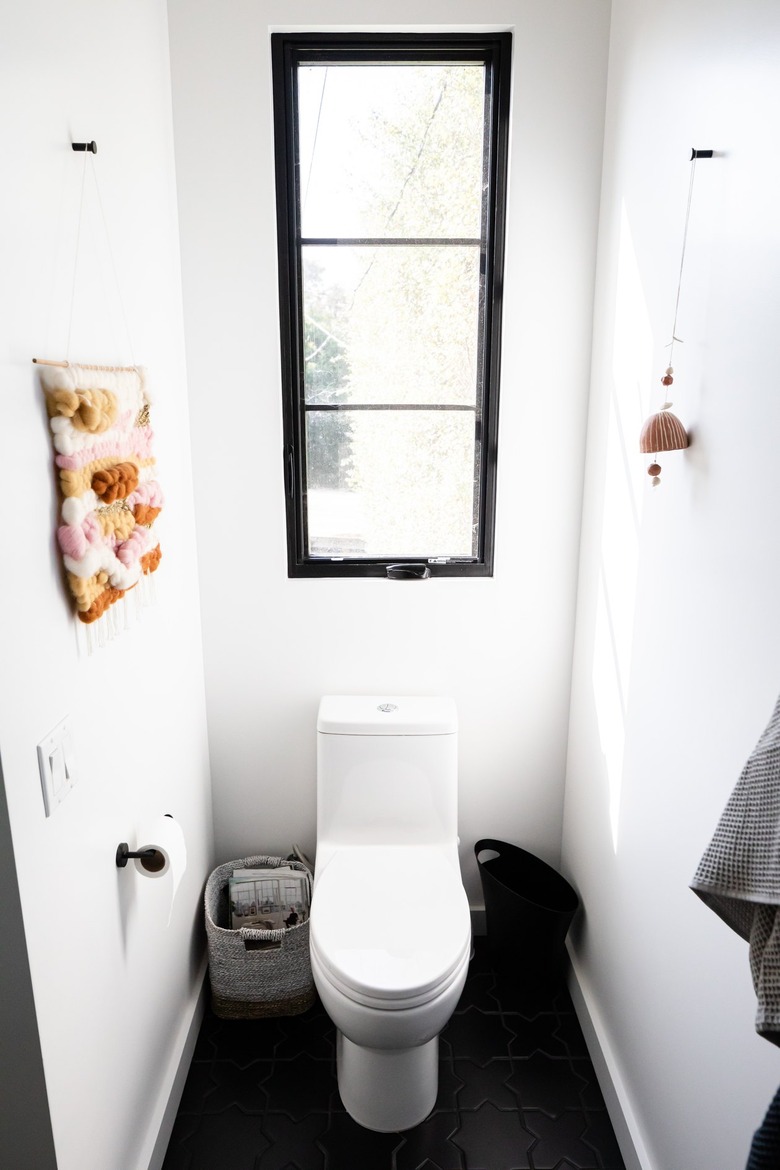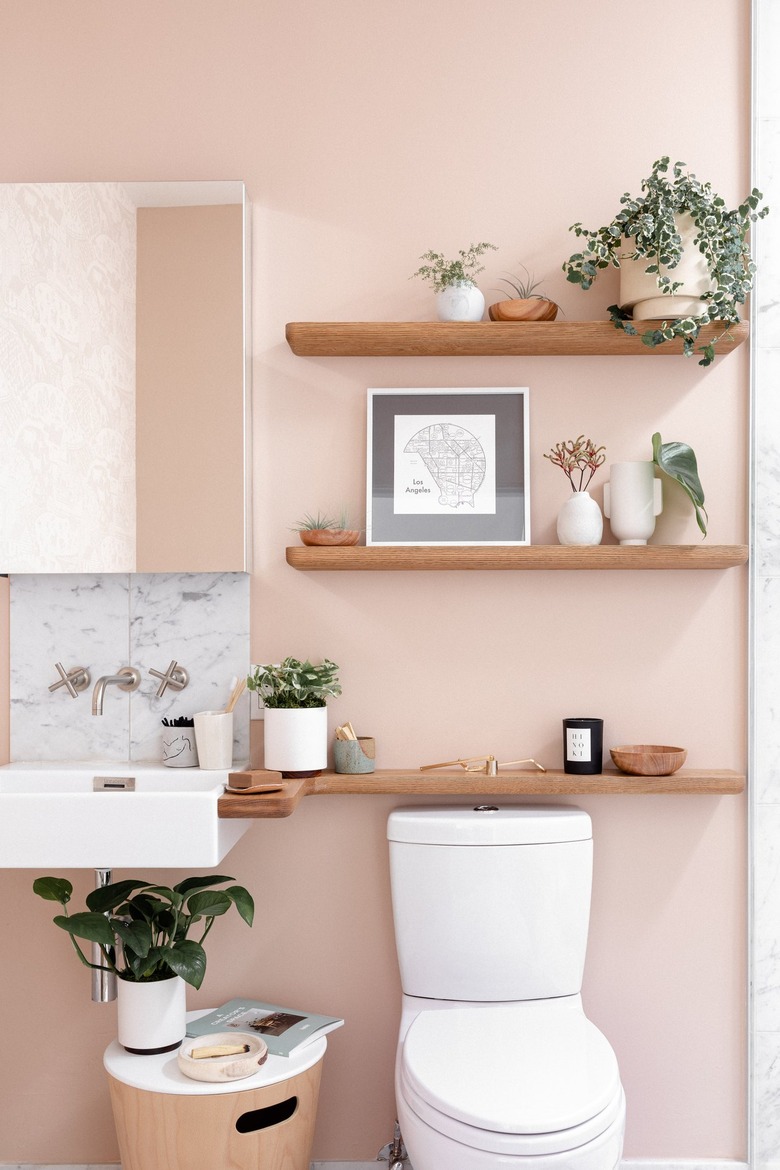How Does A Toilet Work?
Though the flush toilet has been around a lot longer than many people may think, the way a toilet works hasn't changed much in the past century other than continual improvements to save water and increase the power of the flush. Although the inner workings of a toilet may seem a bit complex, the basic toilet relies on concepts that work even without electricity or pumps. Gravity, levers, suction and ventilation are the true heroes behind one of the most underappreciated features in the average bathroom.
Tip
The basic gravity toilet works by the force of more water entering the bowl, pushing wastewater out of the bowl through specially designed curves in the bottom of the toilet. The design helps create siphoning power that flushes out the water.
Flush Toilets: A Brief History
Flush Toilets: A Brief History
Toilets with flushing capabilities have been around since the late 1500s, although they weren't widely used until several centuries later. The 1500s version of the flushable toilet included a waterproofed toilet bowl with water for the flush kept in a cistern up above, possibly on another floor. Homes did not have running water at this time, so the cistern required filling by hand. Once flushed, the power of gravity brought water out of the cistern, through a pipe and into the toilet bowl, flushing the waste matter down into a watery vault below. While this type of toilet was a vast improvement over outhouse-style facilities, it still required clearing of the waste matter a couple of times a day.
Fast forwarding almost 200 years, the first patent for a flushable toilet was granted to an inventor. Alexander Cumming's design was a vast improvement over other options. His toilet included a curved pipe beneath the bowl that helped prevent stinky sewer smells from wafting up through the toilet.
Another 100 or so years later, the humorously named Thomas Crapper invented the classic ballcock rod and floating ball assembly still used in some toilet tanks today. Although he did not invent the modern toilet, his company developed a number of improvements for sanitary equipment, including a successful brand of toilets. This likely led to the porcelain throne earning its nickname of "the crapper."
How Gravity Makes a Toilet Function
How Gravity Makes a Toilet Function
If it wasn't for gravity, the average floor-mounted household toilet wouldn't work. The typical toilet relies on gravity to clear and refill the toilet bowl. This is why toilets on spacecraft require serious amounts of engineering to function properly since there is no gravity in space once outside the range of a nearby planet, moon or star.
At its simplest, a gravity toilet works thanks to a tank full of water. When you flush the toilet, a flapper at the bottom of the tank opens to let tank water into the toilet bowl through rim jets near the top of the bowl and also through a larger area called a siphon jet. In toilets with a float cup or a floating ball assembly, the floating cup or ball drops down as the tank water level drops. When it reaches a predetermined point, it signals the toilet's fill valve to let more water in through the water supply attached to the bottom of the tank. (The toilet will clear waste out of the bowl even if you add a bucket full of water directly to the bowl thanks to gravity and the toilet's design.)
As more water enters the bowl from the tank, the force of this water teamed with the force of water through the siphon jet pushes the wastewater and materials out of the toilet bowl and through a built-in channel in the toilet called the trapway. The special shape of the trapway helps create a siphoning effect that pulls waste matter out through a waste pipe beneath the toilet, where it eventually meets up with sewer lines outside the house. All local wastewater eventually ends up at the nearest water treatment facility for cleaning.
The All-Important Trapway
The All-Important Trapway
The trapway is the part of the toilet that makes a toilet a reasonable and welcome addition inside a home. Without this curved pipe design inside the bottom of the toilet, odors would travel up from the connected drain pipes, making the bathroom stink potentially all the time. A little water sits in the part of the trapway closest to the toilet bowl when the toilet isn't in use; this is largely responsible for blocking odors from coming back up through the toilet.
As you flush the toilet and more water enters the bowl, the weight of the bowl's water forces more water through the "S" portion of the trapway, creating a siphoning effect that clears the bowl in a hurry.
The Equally Important Vent Pipe
The Equally Important Vent Pipe
The waste and drain pipe system in every home also has a vent pipe that releases sewer gases outside the home, typically on a roof. Besides helping to prevent stinky indoor air, the vent pipe also allows fresh air into the system, which helps balance air pressure within the waste or drain pipes, according to Plumbing Dynamics. Without balanced air pressure, toilets would not flush as expected, nor would sinks drain properly.
The vent concept works a bit like a straw. If you push a straw into a glass of water and then put your finger over the top of the straw and lift the straw out of the glass, water stays inside the straw. If you try to drink from the bottom end of the straw while your finger blocks the top, you won't be able to draw water from the straw. Releasing your finger "vents" the straw and allows water and ultimately air to flow through once again. A drain pipe without a vent is like holding your finger over the straw; without airflow in the system, water doesn't flow easily down the pipes.
Innovative Flush Improvements
Innovative Flush Improvements
Water-saving changes are among the best improvements made to standard gravity toilets in recent decades. Toilets built before the 1980s used up to 7 gallons per flush, while the average gravity toilet made in the past 25 years uses only 1.6 gallons per flush, amounting to significant water savings over the course of a year. When water-saving or low-flow toilets were first introduced, they didn't work as well as older toilets that used more water because there wasn't as much water or force to push the waste through. Manufacturers have improved toilet design since then by using wider holes beneath the flapper, wider trapways and glaze on the trapway to decrease friction.
The dual-flush toilet, common in other countries for years, is finally becoming more commonplace in homes across the United States. This type of toilet uses the standard 1.6 gallons of water for a full flush or 0.8 gallons for a half flush. The improvement in this type of toilet, besides being able to choose to save water, is a larger trapway that relies on gravity to send waste on its way.
Pressure-Assist Toilet Functionality
Pressure-Assist Toilet Functionality
The pressure-assist toilet saves even more water overall, requiring only 1.2 gallons per flush, which is less than the average water usage of dual-flush toilets over time. This type of toilet works by using the pressure of compressed air and water from a tank inside the outer toilet tank. As this inner tank fills with water, it compresses the air inside it as well. As you flush the toilet, this inner tank forces water into the toilet bowl faster and harder than gravity alone. If you've ever used a public restroom toilet that had an extremely powerful and noisy flush, it was likely a pressure-assist toilet.
References
- History: Who Invented the Flush Toilet?
- Mr. Rooter: How Do Toilets Work?
- Environmental Protection Agency: What Can You Do to Protect Local Waterways?
- Plumbing Dynamics: How Does a Plumbing Vent Work?
- International Association of Certified Home Inspectors: Pressure-Assist Toilets
- Santa Cruz Water Department: How Much Water Does Your Toilet Use?

